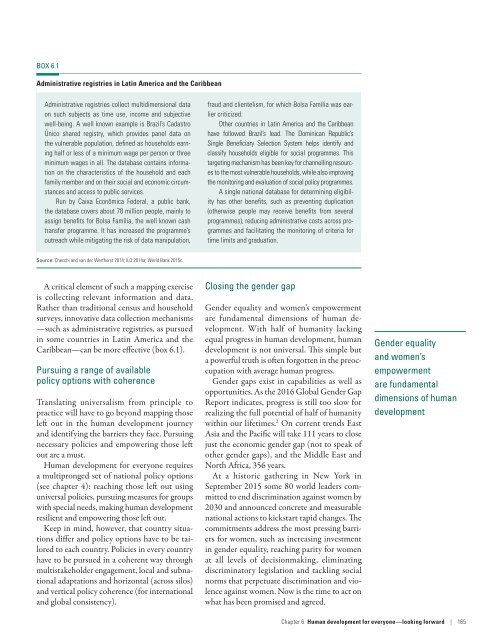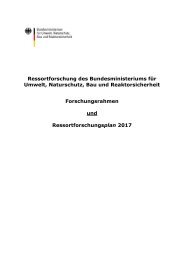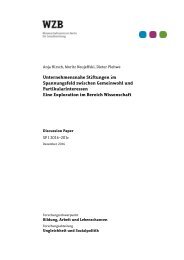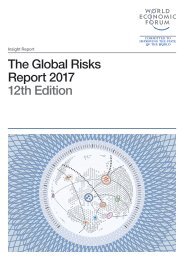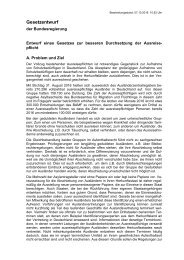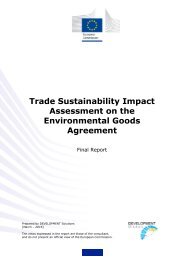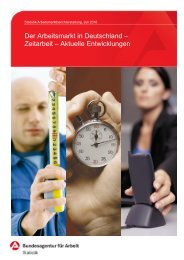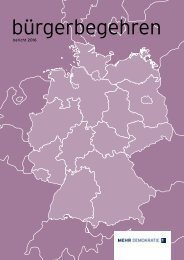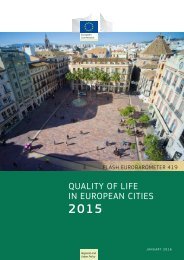Human Development Report 2016
6Tyccfrzw
6Tyccfrzw
You also want an ePaper? Increase the reach of your titles
YUMPU automatically turns print PDFs into web optimized ePapers that Google loves.
BOX 6.1<br />
Administrative registries in Latin America and the Caribbean<br />
Administrative registries collect multidimensional data<br />
on such subjects as time use, income and subjective<br />
well-being. A well known example is Brazil’s Cadastro<br />
Único shared registry, which provides panel data on<br />
the vulnerable population, defined as households earning<br />
half or less of a minimum wage per person or three<br />
minimum wages in all. The database contains information<br />
on the characteristics of the household and each<br />
family member and on their social and economic circumstances<br />
and access to public services.<br />
Run by Caixa Econômica Federal, a public bank,<br />
the database covers about 78 million people, mainly to<br />
assign benefits for Bolsa Família, the well known cash<br />
transfer programme. It has increased the programme’s<br />
outreach while mitigating the risk of data manipulation,<br />
fraud and clientelism, for which Bolsa Família was earlier<br />
criticized.<br />
Other countries in Latin America and the Caribbean<br />
have followed Brazil’s lead. The Dominican Republic’s<br />
Single Beneficiary Selection System helps identify and<br />
classify households eligible for social programmes. This<br />
targeting mechanism has been key for channelling resources<br />
to the most vulnerable households, while also improving<br />
the monitoring and evaluation of social policy programmes.<br />
A single national database for determining eligibility<br />
has other benefits, such as preventing duplication<br />
(otherwise people may receive benefits from several<br />
programmes), reducing administrative costs across programmes<br />
and facilitating the monitoring of criteria for<br />
time limits and graduation.<br />
Source: Checchi and van der Werfhorst 2014; ILO 2014a; World Bank 2015c.<br />
A critical element of such a mapping exercise<br />
is collecting relevant information and data.<br />
Rather than traditional census and household<br />
surveys, innovative data collection mechanisms<br />
— such as administrative registries, as pursued<br />
in some countries in Latin America and the<br />
Caribbean — can be more effective (box 6.1).<br />
Pursuing a range of available<br />
policy options with coherence<br />
Translating universalism from principle to<br />
practice will have to go beyond mapping those<br />
left out in the human development journey<br />
and identifying the barriers they face. Pursuing<br />
necessary policies and empowering those left<br />
out are a must.<br />
<strong>Human</strong> development for everyone requires<br />
a multipronged set of national policy options<br />
(see chapter 4): reaching those left out using<br />
universal policies, pursuing measures for groups<br />
with special needs, making human development<br />
resilient and empowering those left out.<br />
Keep in mind, however, that country situations<br />
differ and policy options have to be tailored<br />
to each country. Policies in every country<br />
have to be pursued in a coherent way through<br />
multistakeholder engagement, local and subnational<br />
adaptations and horizontal (across silos)<br />
and vertical policy coherence (for international<br />
and global consistency).<br />
Closing the gender gap<br />
Gender equality and women’s empowerment<br />
are fundamental dimensions of human development.<br />
With half of humanity lacking<br />
equal progress in human development, human<br />
development is not universal. This simple but<br />
a powerful truth is often forgotten in the preoccupation<br />
with average human progress.<br />
Gender gaps exist in capabilities as well as<br />
opportunities. As the <strong>2016</strong> Global Gender Gap<br />
<strong>Report</strong> indicates, progress is still too slow for<br />
realizing the full potential of half of humanity<br />
within our lifetimes. 2 On current trends East<br />
Asia and the Pacific will take 111 years to close<br />
just the economic gender gap (not to speak of<br />
other gender gaps), and the Middle East and<br />
North Africa, 356 years.<br />
At a historic gathering in New York in<br />
September 2015 some 80 world leaders committed<br />
to end discrimination against women by<br />
2030 and announced concrete and measurable<br />
national actions to kickstart rapid changes. The<br />
commitments address the most pressing barriers<br />
for women, such as increasing investment<br />
in gender equality, reaching parity for women<br />
at all levels of decisionmaking, eliminating<br />
discriminatory legislation and tackling social<br />
norms that perpetuate discrimination and violence<br />
against women. Now is the time to act on<br />
what has been promised and agreed.<br />
Gender equality<br />
and women’s<br />
empowerment<br />
are fundamental<br />
dimensions of human<br />
development<br />
Chapter 6 <strong>Human</strong> development for everyone—looking forward | 165


